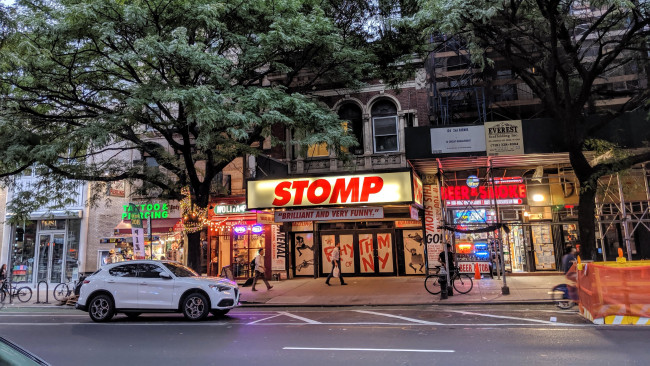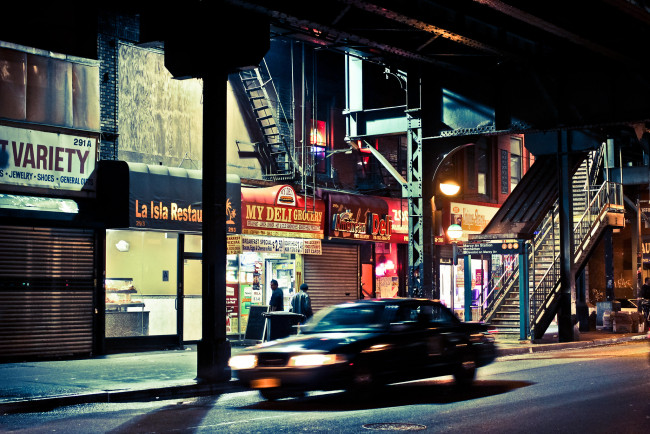I lived in a NYC building that had scaffolding for a year and it changed life on our block

"Days, weeks, and then months passed, and the scaffolding remained, darkening our building," our author writes.
iStock
The scaffolding went up around my building overnight one night in fall, without any notice. I live in a 260-unit building on the Upper East Side. It is connected to another sister building through a shared basement with two different entrances, and the complex spans an entire city block. The scaffolding extended from 88th Street to 89th Street along First Avenue and wrapped around each corner, over the entrances. It went as high as the third floor.
Thankfully, I live on the fourth floor, so I still had light coming in through my windows. Tenants below the fourth floor were upset to find their apartments dark during the day.
Initially, no one knew why it was erected.
When I came down to the lobby walk the dog in the morning, it looked dark even though it was relatively warm and sunny out. Some residents were gathered around the doorman—they wanted to know what was happening. He explained the scaffolding was needed for some building repair work—apparently parts of the façade needed to be reinforced and then would undergo a cleaning.
[Editor's Note: Brick Underground's series “Living Next to” features first-person accounts of what it’s like to have an iconic or unusual New York City neighbor. Have a story to share? Drop us an email. We respect all requests for anonymity.]
It affected life in and around the building
Days, weeks, and then months passed, and the scaffolding remained, darkening our building. But no work commenced. Apparently, our building had not been granted the necessary permits to do the work. This was a sort of cart-before-the-horse situation.
While the scaffolding seemingly had no use, it still affected life in and around the building. Delivery workers locked their bikes to it and congregated under it. At night I could hear their voices through my open windows. People sat on it and smoked like it was some kind of lounge. I would often wake up in the middle of the night from the odor of cigarettes in my room.
There were more, unforeseen problems. Neighbors would walk their dogs under it, and the whole block smelled like urine (I'm assuming it was from just dogs but you never know). Our porters hosed down the area once a day, wasting water, and within a few hours it smelled bad all over again. It was particularly bad in the summer. Everything smells worse on a NYC street in the summer.
The scaffolding was absorbed into life on the block. Stores put up big signs reminding everyone they were indeed still open for business. Kids would use it as monkey bars and neighbors would tie their dogs to it while running into the coffee shop or bodega on my block.
It was like the movie “The Gods Must Be Crazy.” Something foreign was thrown into our NYC mix and people reacted to it.
Finally, work (and noise) started
Thankfully, by mid-winter the permits came through and at least the scaffolding had a purpose then. Workers began repairing our building’s façade. However, along with that work came noise. Day after day, there was noise all over the scaffolding. Sometimes workers screamed or cursed, which would interrupt my work (I work from home).
Often, we’d be given notices to keep our curtains and windows closed because workman would be outside our windows. Other times this happened by surprise; the workmen certainly saw me getting dressed (or undressed).
Their erratic presence was particularly problematic for me and others with dogs. My dog would freak out when she heard someone outside the window and bark incessantly. You knew where the workers were by sound of the dogs in the building barking.
Sometimes the workers taunted my dog, yelling at her and tapping on the window. Then she would go even more nuts because she could hear them but couldn’t see them.
The benefits of scaffolding
Probably the only good part about living with scaffolding was during bad weather, it was great to be able to walk dogs around the block without getting wet. My dog, Biggie Smalls, a miniature dachshund, is such a lowrider she refuses to go outside when the ground is wet from rain or snow. It’s always a battle.
The year the scaffolding was up, she happily went outside even during the worst weather and stayed dry and clean. I often watch her best friend, Elly, a larger dachshund, and it was helpful to be able to walk two dogs easily, without having to deal with them getting wet.
Years before, when I used to commute to a job in Midtown, if it was rainy, it was possible to walk from the subway to my office almost completely by scaffolding. It was like a game to figure out how to get between two points without getting wet.
After nearly a year, I didn’t notice the scaffolding around my building anymore. It just had become part of the building, part of the block. I was used to the lobby being dark. I was used to the block always smelling of urine. It’s strange the way you just stop seeing things.
Suddently, it was gone
Then I went to Miami for Thanksgiving for a week and when I returned, as my cab pulled up to the building, something seemed different. I couldn’t quite put my finger on it at first, but when I entered, I noticed the lobby looked unusually bright. The scaffolding was gone. Just as mysteriously as it arrived, it disappeared.
That’s how it is in NYC. Years ago, before Times Square morphed into a sort of Disneyfied version of itself, one old theater marquis read: “All goodbye should be sudden.” This reminded me of that.
Inside my building there was a noticeable difference. There was a sort of quiet peacefulness I hadn’t experienced in a long time. I was so glad our building’s exoskeleton was gone.
You Might Also Like
That was until the first snowfall, when I cursed having to try to drag Biggie out to walk through wintry mix, her belly rubbing against the wet slush.



























